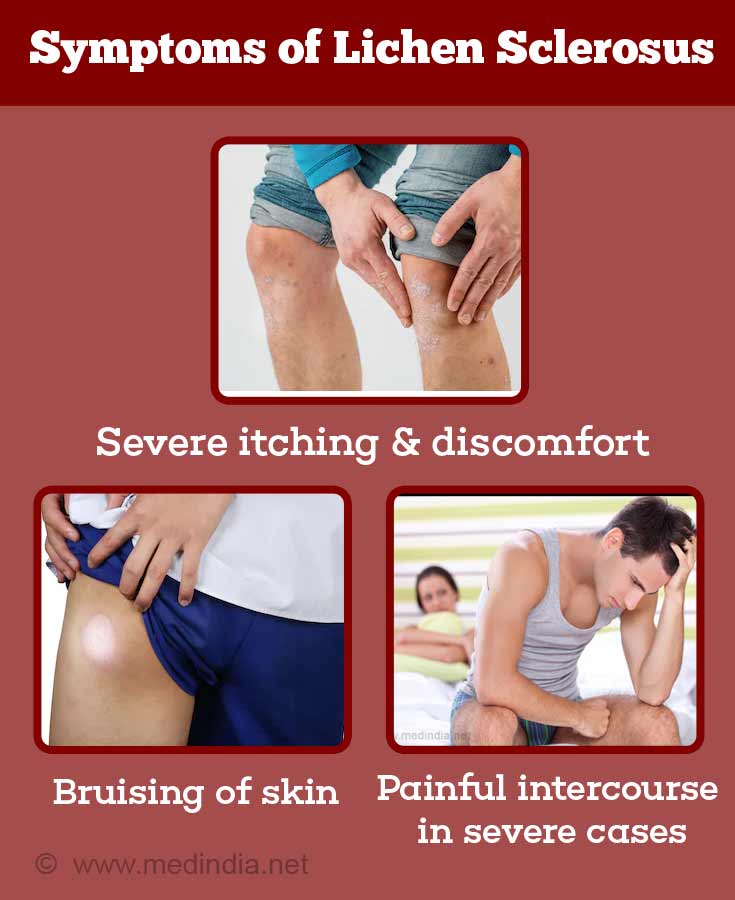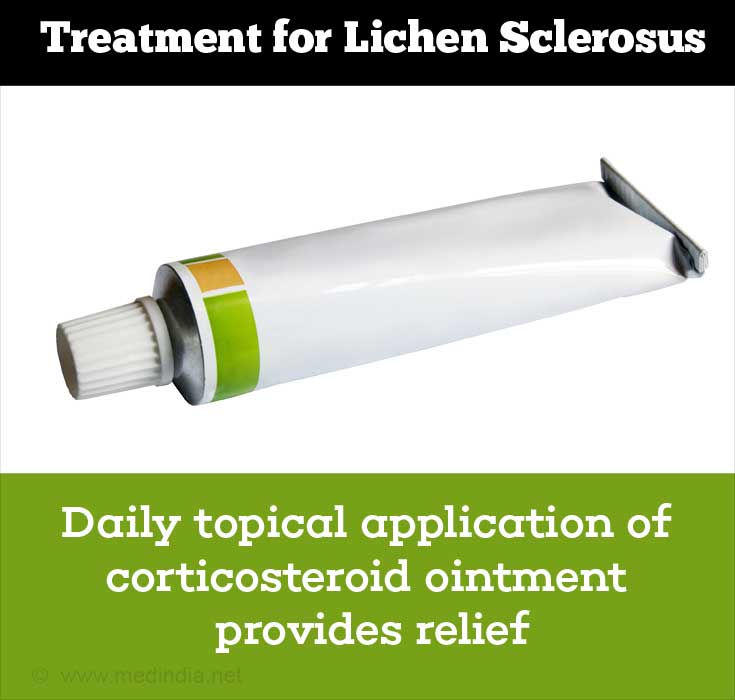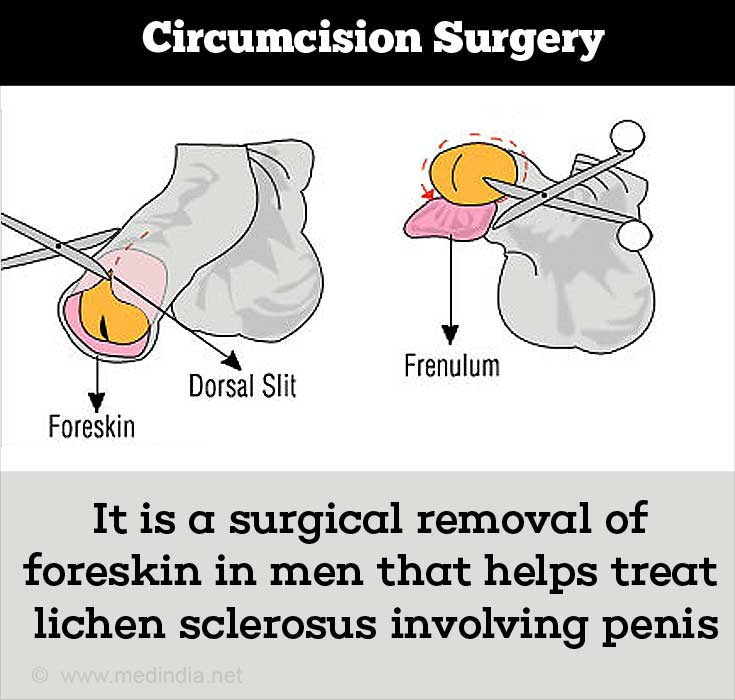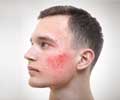- Lichen Sclerosus - Rare Disease Database - (https://rarediseases.org/rare-diseases/lichen-sclerosus/)
- Lichen Sclerosus - National Institutes of Health - (https://www.niams.nih.gov/health-topics/lichen-sclerosus#tab-symptoms)
- What is Lichen Sclerosus? - (https://dermnetnz.org/topics/lichen-sclerosus/)
- Causes of Lichen Sclerosus - (https://www.nhs.uk/conditions/lichen-sclerosus/)
About
Lichen Sclerosus (LS) is a lymphocyte-mediated inflammatory dermatosis (skin condition) brought about by the action of lymphocytes. It is characterized by delicate, patchy white skin.
In majority of those affected by lichen sclerosis, inflammation is typically located in the ano-genital region involving the skin on vulva in women and the skin around anus and foreskin of penis in men. Post menopausal women are the ones most prone to lichen sclerosus. Among boys, and adult males, it is more frequently seen in those who are uncircumcised. In children, the disease is rare and resolves on its own after the attainment of puberty.(1✔ ✔Trusted Source
Lichen Sclerosus - Rare Disease Database
Go to source)
Lichen sclerosus is non-contagious and does not spread through intercourse. Sometimes the disease resolves on its own. If it does not, treatment must be ensured to avoid complications.
Symptoms
Lichen sclerosus, at times, does not manifest any symptoms at all.
Symptoms of lichen sclerosus include -
- Severe itching (pruritus) and discomfort
- Smooth white spots that may transform into blotchy, wrinkled patches
- Easy bruising / tearing of skin
- Painful intercourse, if the disease is in the vulval region
- Bleeding, blistering or ulcerated lesions in severe cases

In severe cases, sexual intercourse becomes extremely painful for women due to itching and tenderness. Besides this, the vaginal opening may be considerably narrowed due to scarring.
In uncircumcised men lichen sclerosus causes tightening and thinning of the foreskin which can make urination and erection quite painful.(2✔ ✔Trusted Source
Lichen Sclerosus - National Institutes of Health
Go to source)
Causes
The exact cause of lichen sclerosus is unclear but decrease in
Previous skin damage is likely to raise the likelihood of disease occurrence at the affected spot.
Persistence of lichen sclerosus in one location of the skin raises the chances of
Causes of Lichen Sclerosus
Go to source)
Diagnosis & Treatments
A physical examination is the first step towards the diagnosis of lichen sclerosus. A biopsy may bed one in some cases to confirm diagnosis. It is done by the surgical removal of skin from the affected spot and examining it under the microscope. The disease often resolves on its own and treatment is necessary only if genital parts are affected.
If scarring is observed around the genital area then treatment would be recommended to reduce itching and also to reduce scarring and improve skin appearance. Surgery in the genital area is generally not recommended for women. In severe cases it may be done but only after controlling the condition through medications.
Some common treatments include -
- Corticosteroids ointment- Daily topical application recommended. To be discontinued after the recommended period of time or in case of side effects

- Immune-modulating medications
- Photo therapy - Ultraviolet light treatment on areas other than genital areas
- Topical sex hormones
- Removal of foreskin (circumcision) through surgery in men. Surgical management in the genital area is not recommended for women as the condition is likely to recur.

Monitoring and 6 month–one year follow ups are required in persistent cases. This is to look out for any changes that may occur.(4✔ ✔Trusted Source
What is Lichen Sclerosus?
Go to source)









